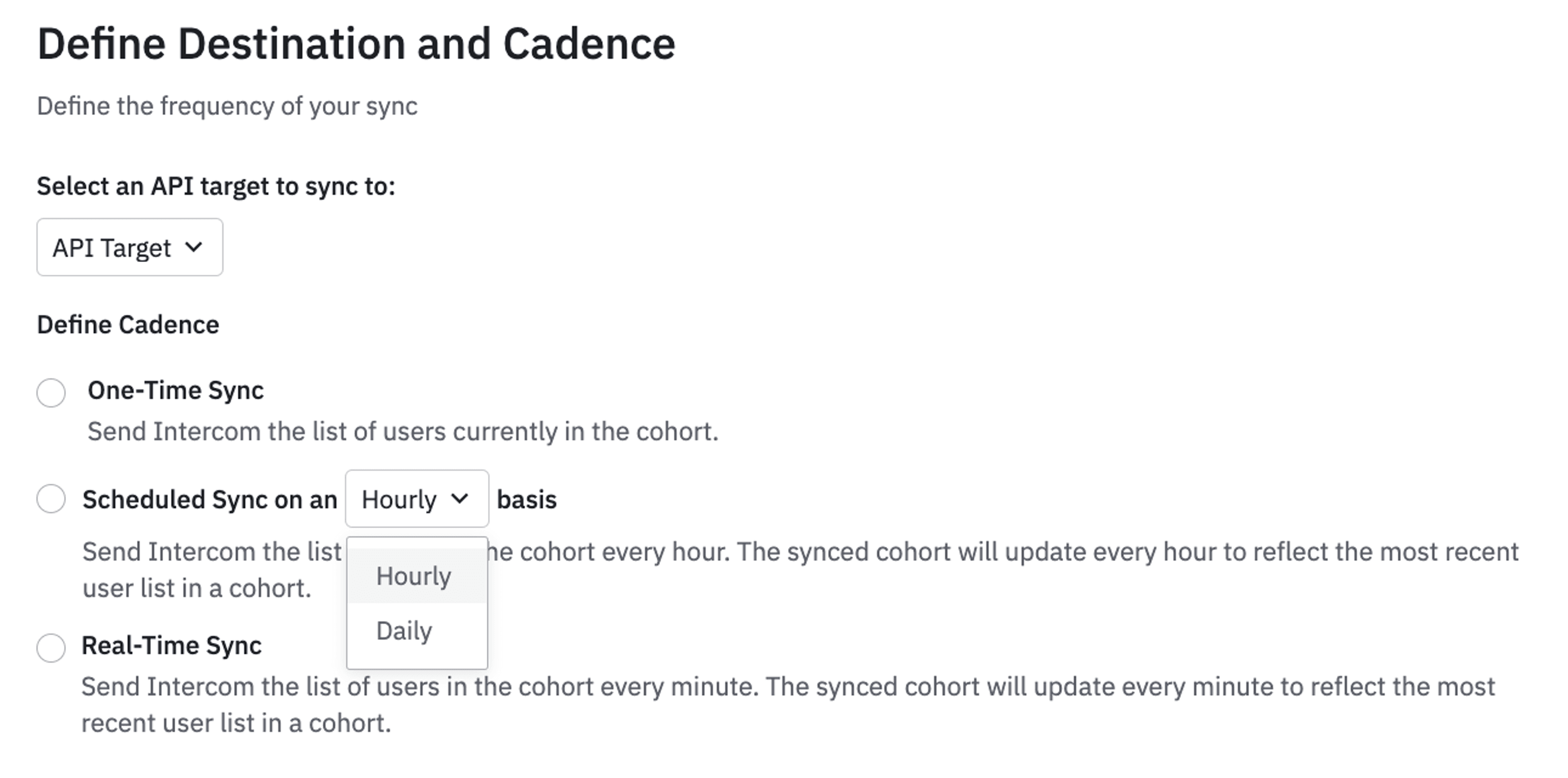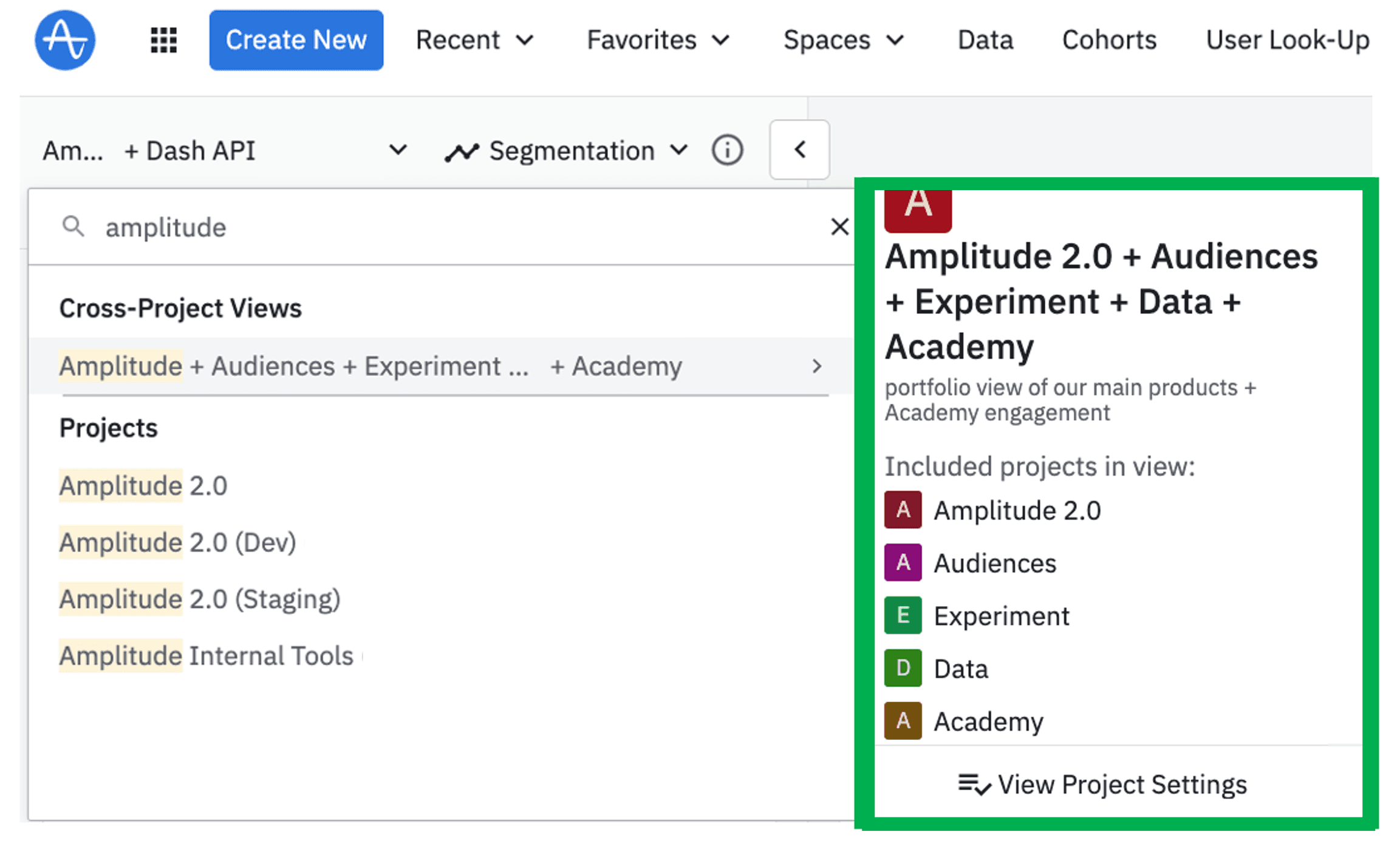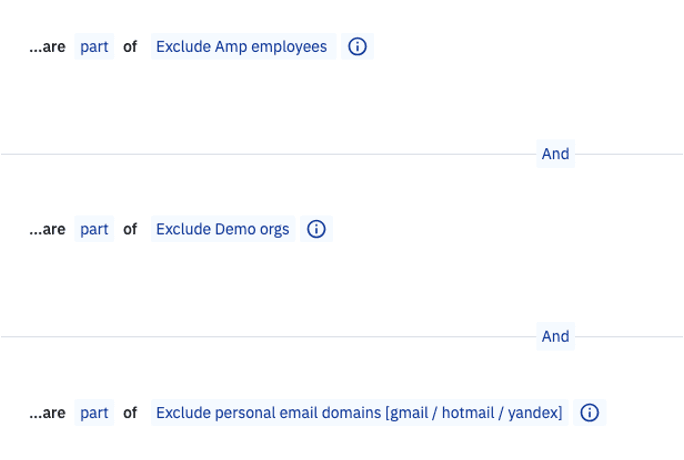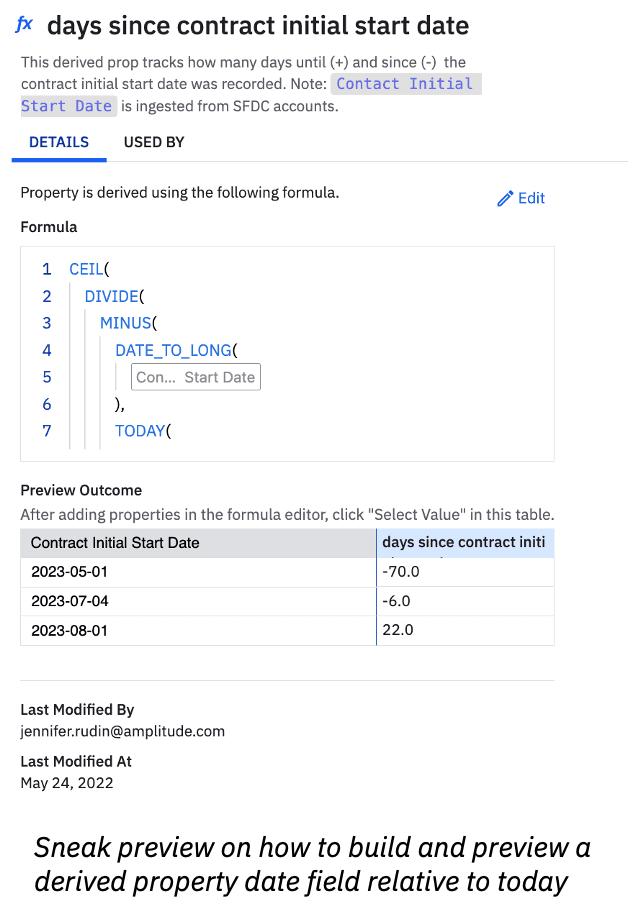Driving Growth with Amplitude Part 1: Unlocking the Power of Integrations
Learn how our team uses Amplitude to power marketing and customer success emails at scale.
This is part one of a three-part series on how the Amplitude Growth Marketing team uses the Amplitude platform to increase adoption, retention, and monetization. Part two covers how to measure campaign performance and share insights at scale, and part three covers proven methods to prevent data silos.
It’s no secret that the right product-led data can drive immense growth for any business. That’s why we help our customers integrate and incorporate Amplitude into their stack to drive powerful insights and automate revenue-generating programs.
But we don’t just talk the talk. We leverage our own product and integrations at every stage of our product development and marketing processes and support our go-to-market teams. In this three-part series, we’ll explain how we use Amplitude to support our go-to-market teams, starting with a deep dive into how we automate data flow across our systems and execute campaigns using cohort syncs, event streaming, and derived properties.
Key takeaways
- Syncing behavioral cohorts to third-party platforms, like Intercom, enables the Amplitude team to send personalized and targeted messages to customers to increase adoption, retention, and monetization.
- Event streaming ensures that users receive the right message at the right time in their user journey as soon as they trigger a milestone event.
- Derived properties enable the Amplitude team to manipulate data in a no-code solution to accelerate our target audiences and analyses.
Enable targeted messaging with cohort syncs
Cohorts are groups of users that share specific characteristics and usage patterns over a period of time. Cohorts help you segment your user base and collect data about how users and accounts interact with your product throughout their lifecycle to fuel marketing and product improvements.
Leveraging data in Amplitude, we build a variety of cohorts across projects and portfolios to segment our users and accounts. These cohorts enable us to build curated audiences for our digital programs to sync to downstream destinations in our tech stack, like Intercom, Userflow, and Marketo, enabling us to launch targeted messages to our users. We base our cohorts on characteristics like behavioral product usage, state-based user property traits, Salesforce Account data, campaign interaction and survey response data, and more.
Setting a cohort sync cadence
You can sync cohorts in Amplitude at a real-time, hourly, daily, or one-time cadence. We determine our sync cadence based on each program’s needs.
For example, we’ve leveraged a one-time sync for a cohort of European product marketers to send a single announcement about an upcoming local webinar.
By contrast, we use daily syncs in evergreen product adoption campaigns targeting new users who’ve recently upgraded from our freemium product to share best practices on increasing the adoption of their new premium features.
We rely on hourly or real-time sync when we expect the cohort data to change multiple times within a user’s session or when the message is time-sensitive to the user action performed. For example, we immediately reach out to select paid users if their in-product survey feedback has negative sentiment to see if they’d like to schedule time with a product subject matter expert.

Defining niche cohorts
At Amplitude, we build advanced cohort definitions specific to each program, with 100+ active cohorts syncing to Intercom and other destinations. Each of these cohorts targets specific users and accounts sourced from a wide breadth of data, including multi-product behavioral actions, user properties, group properties, Salesforce-enriched fields, survey responses, campaign interactions, etc.
When targeting users for a specific program, we often need to account for customer activities performed across multiple Amplitude products. We build and sync these cohorts from cross-project portfolio views to ensure optimal data inclusivity. Below you can see a sample cross-project view comprised of 5 different source projects—Amplitude 2.0, Audiences, Experiment, Data, and Academy.

One example of how our Growth Marketing team utilizes cross-project portfolios is for a cohort targeting the data governor persona. Some of the data sources used to build this cohort criteria include:
- Product data: User-driven “create,” “update,” “delete,” and “monitor” actions inclusive to both the legacy Govern product and the new Data product
- Salesforce group properties: Contract dates, account tiers, market segments
- Derived properties: Days since and days until contracts start and end
- User properties: Plan, permission level, email domain
- Campaign data: Remove recipients from similar campaigns
- Academy data: Academy course enrollments for data governance
Cross-project portfolios are a valuable source to sync cohorts from because they unlock flexibility in expanding target inputs over time. Iteration is key when defining the right audience for a program, especially when you have an ever-evolving product along with an ever-evolving data taxonomy.
To simplify the build and readability of our cohorts, we leverage embedded cohorts as part of our foundational setup. For common filters we apply across all programs, we build reusable segments and plug them into cohorts as needed. Commonly used filters for our programs include removing internal employees, removing demo orgs, and sometimes removing personal email domains.

Sync Salesforce data to enable account-level targeting
Several of our cohorts reference multiple Salesforce group properties that we sync into Amplitude so we can analyze information about accounts that exist on that platform.
This Salesforce integration syncs account-level group properties to Amplitude, enabling us to enrich our user targeting with critical sales information, such as the contract start and end dates, opportunity close dates, account assigned CSMs, market segment, account region, etc.
We commonly reference account contract start and end dates from Salesforce in our target cohort criteria to ensure we launch the most relevant digital nurture at the right stage in the account lifecycle. It’s important to consider if specific program content requires a certain account tenure level. Applying bulk filters to charts and dashboards is another example of how we leverage group properties synced from Salesforce. Bulk filters such as Assigned CSM Name enable us to build scalable insights for each CSM’s most active accounts and identify which accounts might be struggling to adopt premium features.
Use event streaming to reach customers at the right time
While a cohort defines who to target, event streaming defines when to deliver a message. Event streaming is similar to a webhook; it sends data from Amplitude to a destination based on real-time triggered events. The next time a user triggers an event, that event gets posted to the destination app and can trigger the delivery of a message. Event streaming is valuable for time-sensitive, in-app messages that need to be delivered in near real-time. The Amplitude Growth Marketing team uses event streaming in a variety of ways:
Encouraging new member invites
At Amplitude, we use event streaming to promote team member invites in new freemium accounts. If there is no data instrumented within “n” days of account creation, we deliver a welcome email with instructions on how to get started with instrumentation. Within a few days, if the org still hasn’t instrumented data, we check for a streamed event, “settings: invite user,” to verify if they’ve attempted to invite users to the org. If they haven’t sent any invites yet, we send a second message encouraging them to invite a developer to their org instance to set up data.
Sending real-time in-app notifications
The Amplitude team also uses a combination of a cohort sync for the target audience and event streaming for the delivery trigger to send real-time in-app notifications to users as soon as they reach key milestones in the product.
For example, let’s say we want to send a celebratory in-app message to users on a freemium plan within the same session that they reach a key milestone of saving 5 charts in their first n days. First, we would qualify eligible users who are new to the freemium plan and saved 4 charts in the last “n” days. Then upon the user’s next real-time chart save, we would deliver a message within the same session of the streamed event “saved chart”.
For more information on when to leverage cohort syncs vs. event streaming, check out this Community post.
It’s quite powerful and honestly impressive with how granularly you can target customers with the right messaging at the right time in their product journey. When it comes to product instrumentation, make sure to consider the data needs of your Growth Marketing teams. Whether they’re setting up the entry audience conditions for a new program, creating dynamic deep links to personalize the click-through experience, building dynamic content blocks within a message body that differs based on the persona, or measuring campaign performance and correlated behaviors in the product, data is the fundamental element of Growth Marketing’s day-to-day work.
Leverage more flexible targeting with derived properties
Oftentimes, our niche cohorts require the use of derived properties to enable more flexible targeting and advanced analyses post-launch. A derived property is built by extracting meaningful information from a data point through various functions and operators, including math, string, date/time functions, and conditional operators. Two ways we manipulate data to promote more flexible targeting include:
Targeting users and accounts with dynamic date fields
It’s critical to have the flexibility to target users and accounts using dynamic date fields relative to today, like “n days since contract start date” or “n days until contract end date.”
For example, if a sales rep closes a deal with a new customer but the contract start date is set to a future date to accommodate the customer’s team's bandwidth and resources, we exclude these users and accounts from upsell campaign targeting. That way we avoid double-upselling product features that have already been purchased. Within the target cohort, we specify that the target user group on a freemium plan does not have a contract start date in the next “n” days relative to today.
For more information on building this logic into your Amplitude project, check out this Community post.

Extracting a numerical value from qualitative feedback
While qualitative data is incredibly powerful, it can be hard to analyze and derive insights from it at scale. We can extract a numerical value from qualitative feedback to accelerate the build of target cohorts and analyses. For example, the Amplitude team collects some sentiment data via Intercom and tags the responses as long strings like “survey responded - program name - channel - question name - response value - survey id .” Through the Intercom to Amplitude integration, this data gets ingested as an event property, and while we can use glob match conditions to parse out the response values, we can’t perform calculations on strings.
But we can build a derived property in reference to this event property, like:
- Extract portions of the string response values, such as “moderate” or “very satisfied”
- Transform these values into meaningful integers, such as a score of “3” or “5”, respectively, in a 1-5pt scale
This enables us to perform calculations on the data to get quantitative insights, like average sentiment score, and then break that score down further by region, plan, assigned CSM, etc.
For more information on the technical setup of this sample-derived property, check out this Community post.
More Amplitude on Amplitude
At Amplitude, we believe there is no better way to improve our product than to be our own customer. It enables us to experience the joys of what we can accomplish with our product and the pain points when we hit a product limitation. As a result, we submit just as many feature requests to our product team as our customers do.
In this blog, we shared how our team leverages advanced integration capabilities to sync cohorts, stream events, and flexibly target customers using derived properties.
Stay tuned for parts two and three, where we’ll review measuring campaign performance and building and sharing insights at scale, and helpful methods to prevent data silos.
For more resources to power your growth with Amplitude, join the Amplitude Community. And for specific questions on this topic, start a thread and direct it to @jennru.

Jennifer Rudin
Senior Data Strategist, Amplitude
Jennifer is Amplitude’s Sr. Data Strategist, focused on integrating Amplitude into her everyday work. Her intentions are to break down data silos, increase data literacy, and build confidence in our internal data infrastructure.
More from Jennifer




